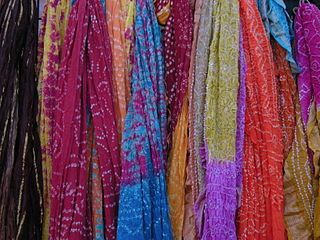From Guest Blogger Wilson: Most Common Resources Of Green Fabrics

Common Natural “Ecofriendly” Fabrics:
Following lines explain some of the most commonly found natural and ecofriendly fabrics that will help you to rejuvenate your wardrobe thoughtfully.
- Organic Cotton:
Organic cotton is one of the most chemical laden crops in the world and therefor, you should be careful while buying any fabric made of it. Although some so called expert argue that it is a big green step to support organic cotton yet most of them do not tell you the whole story. Therefore, a sweet T Shirt might have left its huge footprints on the planet. If you still want to buy this fabric, go for the natural shades that are pale green, light blue or cream. Furthermore, you also need to look for credible labels such as Eco-Cert to verify that the fabric is ecofriendly, sustainable and certified organic.
- Silk:
As compared to organic cotton, silk is inherently natural because no chemical process is involved in manufacturing silk but it is prepared by silkworms. However, the worms are thrown in the warm water after their handwork is complete in order to get the silk. Therefore, you should demand for a new breed of the fabric that is vegan silk or peace silk where no such cruel process is involved. Similarly, you can also look for silk that is dyed natural to make it as close to home as possible.
- Bamboo:
Bamboo is often referred as extremely ecofriendly because it can be grown quite easily without using any pesticide and can replenish itself. Another advantage of this plant (as insisted by the bamboo industry) is that fabric made of bamboo repels odor and is naturally antibacterial. However, it potentially loses its eco status when the processing starts because a chemical component is involved at this stage of manufacturing.
- Polyester:
Polyester is made from petroleum that is the byproduct of the processed oil and has no nothing to do with ecofriendly environment. However companies are now looking for ways to prepare polyester from recycled materials such as bottles and even fabrics. Polyester is usually the most ecofriendly when it is vintage, in addition with second life boutiques that are brimming with retro style that can add lot of green funk to your lifestyle.
- Linen:
True linen is made from the natural crop that requires very little pest controlling chemicals, the flax. Similarly, you can conserver some energy when it is bit wrinkly because you do not need to iron the fabric. You should wear the lined that is dyed with natural dyes or is in natural shade. Similarly, always buy the fabric made by the company that is eco certified.
Author’s Bio:
Wilson usually writes on ecofriendly ways of home improvement and works for an online canvas printing home décor company.
